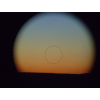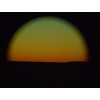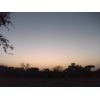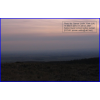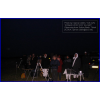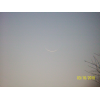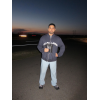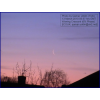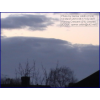Visibility of Rabee' Al-Aakher Crescent 1431 AH
- When to Observe Rabee' Al-Aakher Waxing (NEW) Crescent ?
- Rabee' Al-Aakher Waxing (NEW) Crescent Observation Results
- The OFFICIAL First Day in Different Countries
- When to Observe Rabee' Al-Awwal Waning (OLD) Crescent ?
- Rabee' Al-Awwal Waning (OLD) Crescent Observation Results
When to Observe Rabee' Al-Aakher Waxing (NEW) Crescent ?
The geocentric conjunction (Geocentric New Moon) will occur Inshalla (Monday 15 March 2010) at 21:01 UT.
Sighting the new crescent on (Monday 15 March 2010) and (Tuesday 16 March 2010) is shown in the below graphs using the program Accurate Times by Mohammad Odeh according to Odeh criterion. Where:-
- It is impossible to see the crescent from the areas located under the red color. Because either the Moon on this day sets before the Sunset and/or the topocentric conjunction occurs after the Sunset.
- The crescent is expected to be seen by optical aid only from the areas located under the blue color.
- The crescent is expected to be seen by optical aid from the areas located under the magenta color. In these areas the crescent could be seen by naked eye if the atmospheric conditions are superb and the observer is experienced.
- The crescent is expected to be easily visible by naked eye from the areas located under the green color.
- The crescent cannot be seen from uncolored areas, even though the Moon sets in these locations after the Sunset and the topocentric conjunction occurs before the Sunset, but the Moon is not sufficiently illuminated in order to be seen as crescent even by optical aid.
- Kindly notice that the below graph shows the possibility of seeing the crescent from areas between 60 degrees north of Equator down to 60 degrees south of Equator.
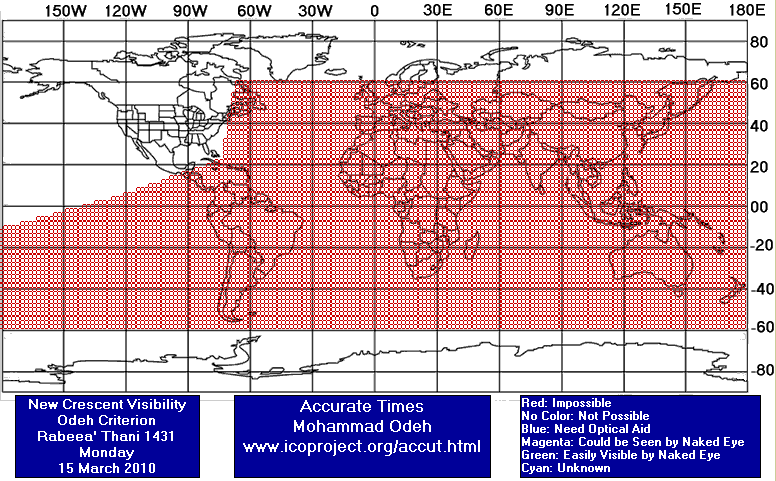

According to the Universal Hejric Calendar (UHC), which is based on the calculated crescent visibility, the start of this month in the Eastern Region will be on Wednesday 17 March 2010 and in the Western Region will be on Wednesday 17 March 2010. Kindly notice that the UHC is a pre-calculated calendar, which adopts a certain criterion to start the new Hejric month. Your country/organization might adopt different criterion to start the new Hejric month. So it is highly advised to read the UHC website before giving any judgment.
- Results of seeing the crescent, and the first day of the month in different countries will be added here Inshalla as we receive the reports from ICOP's members. If you wish to be a member in ICOP, or to know more about it, kindly click here.
Rabee' Al-Aakher Waxing (NEW) Crescent Observation Results
Tue 16 March 2010
Algeria
Mr. Hocine Chikh Aissa said: "13 persons were prensent in N'tissa station. Rabee Thani Crescent 1431 crescent was seen by naked eyes and by binoculars. membres of club ammi said d'astronomie amateurs"
Germany
Eng. Martin Elsaesser said: "Thick clouds all around. No chance."
Malaysia
Mr. Kassim Bahali said: "I and 40 students from Islamic Science University have did the hilal observation from Al-Khawarizmi observatory. Sighting by telescope Meade LX200 8" but the western sky was cloudy. The hilal was not seen."
Nigeria
Mr. Usman Dukku said: "It was cloudy therefore we did dot attempt sighting the crescent. Similarly it was cloudy in the other places where we have representatives."
Pakistan
Mr. Alam Sultan said: "Today (Tuesday, March 16, 2010 = 29 Rabee-ul-Awwal 1431 in Pakistan), on my request nearly 200 persons (members of the moon-sighting committees of our institute "JAMIA-TUR-RASHEED" + my friends + their companions) tried to sight the moon at more than 30 places all over Pakistan but the moon could not be sighted, as it was expected tonight. Weather was clear at nearly all places. Note 1: Today (Tuesday, 16 March 2010) the conditions of the moon were so defective in most Asia especially in Pakistan that according to the all old and new criteria of moon-sighting, there was no solid proof in the history of astronomy to sight such a moon by naked eyes. Note 2: Chairman of central official moon sighting committee of Pakistan mufti munee-bur-Rahman told me on my mobile phone that as he also did not receive any positive report countrywide therefore he announced officially that Wednesday 17 March is 30th Rabee-ul-Awwal and Thursday 18 March 2010 is 1st Rabee-uth-Thani1431 in Pakistan. Note 3: After some days, inshaallah, a detailed report of this observation in Urdu will be available at www.esnips.com/web/moonnewsofjamiaturrasheed "
Saudi Arabia
Mr. Bander Albotehy said: "The clouds covered most of the western horizon area which prevented us from sighting the new moon. Venus was high and clear. However, the clouds were blocking it and other celestial objects most of the times."
Senegal
Somalia
South Africa
Trinidad and Tobago
Mr. Kahiam Hosein said: "The crescent was NOT SEEN in Trinidad and Tobago, Guyana, Barbados and Grenada after sunset on Tuesday 16th March 10. The sky in the region was partly cloudy. Therefore Rabiiul Awwal completed 30 days. However, the moon WAS SEEN after sunset on Wednesday 17th March 10. Therefore, the 1st night is the night of Wed 17th March 10 and the first day is the day of Thurs 18th March 10. On Behalf of Darul Uloom Moon Sighting Committee "
United Kingdom
Eng. Qamar Uddin said: "On Tuesday 16 March 2010 (29 Rabi-ul Awwal 1431 AH) many people from throughout UK have attempted to sight the youngest crescent moon (Hilal) of Rabi-ul Thani after sunset. People made arrangements to observe from exceptionally high locations with clear western horizons (including Sutton Bank, 1000 ft above sea level). Unfortunately, the 21 hours old Hilal was not sighted, as most places became totally cloudy after sunset. We have not received any reliable sighting news from countries from East of UK either (including negative sighting Morocco). Therefore, the Ulama have decided that the month of Rabi-ul Awwal 1431 AH will have 30 days and the month of Rabi-ul Thani (or Rabi-ul Akhir) 1431 AH will start from Thursday 18 March 2010, Insha-Allah. The Sutton Bank (Thirsk, North Yorkshire) group of 22 observers comprised of the following people. From Manchester: Maulana Samiruddin Qasmi, Mohammad Bhana, Mohammad Bharmgy, Javed Mami and Imran Samir. From Batley: Maulana Hasib Mayet, Maulana Imran Lunat, Ismail Bhai Lunat and Vashiullah Bodiyat. From York: Shaykh Zubair Ahamad, Salim Amira, Meshal Al-Naseer, Mohammad Al-Rahmawy, Dawood Wlikinson, Moin Uddin and Qamar Uddin. Members of York Astronomical Society included: Martin Whipp, Paul Buglass, Martin Whillock, Philip Holmes, Philip Jennings (and his mother, Mrs Jennings)."
United States
Dr. Javad Torabinejad said: "This evening (Tuesday, March 16, 2010), I sighted the crescent moon of Rabee' Thani in Buchanan, VA, first by using a pair of binoculars (7X50) and then by naked eye. I arrived at the sighting location before sunset (sunset: 7:26 pm EDT) and left before moonset (moonset: 8:31 pm EDT). The first binocular sighting was at 7:32 pm followed by the naked eye sighting at 7:37 pm (elevation of 7.5 degrees). The horns were at 4:00 and 8:30 O'clock (4:00;6:00;8:30). At 7:26 pm, the temperature, dew point, relative humidity, and pressure were 51.9 F, 36.0 F, 54%, and 30.00 in, respectively."
Dr. Hussain Dashti said: "Salam, My friend, Dr. Saleh Alshamali, and I went to sight the Hilal today, 16/3/2010, in Gainesville Florida. We were able to sight it with naked eyes. I was able to see the Hilal with a 10X50 binocular first at 7:45 PM, then with naked eyes at 7:57 PM. The Hilal calculations: - Sunset: 19:38 LT T. Moon Age: +24H 42M - Moonset: 20:36 LT Moon Lag Time: +00H 58M - T. Moon Altitude: +11°:10':39" - T. Elongation: +12°:33':15" - T. Relative Azimuth: +03°:39':41" - T. Crescent Width: +00°:00':22" - T. Illumination: 01.20 % I was also able to take pictures of the Hilal by attaching a Canon S90 camera to my Swarovski binocular. Please see the attached photos Dr. Hussain Dashti Gainesville, Florida USA"
Wed 17 March 2010
Nigeria
Pakistan
Mr. Alam Sultan said: "On my request, Today (Wednesday 17 March 2010 = 30 Rabee-ul-Awwal 1431 in Pakistan) many hundred persons (Members of the moon-sighting committees of our institute "JAMIA-TUR-RASHEED" + my friends + their companions) easily sighted the crescent all over Pakistan. Generally, the weather was clear. Thursday 18 March 2010 is 1st Rabee-uth-Thani1431 in Pakistan. Note : After some days, inshaallah, a detailed report of this observation in Urdu will be available at www.esnips.com/web/moonnewsofjamiaturrasheed "
Somalia
Mr. Abdulaziiz Hagi Bashiir said: "Wednesday 17 March 2010 the new crescent of the month Rabie Al Thani was by naked eyes in many places. Here Garoowe, the western horizon was mostly cloudy and that is why we could not see it till its setting..."
The OFFICIAL First Day in Different Countries
Wed 17 March 2010
1 . Indonesia
2 . Malaysia
3 . Saudi Arabia
4 . United States
Thu 18 March 2010
1 . Pakistan
2 . Senegal
3 . Somalia
4 . South Africa
5 . Tanzania
6 . Trinidad and Tobago
7 . United Kingdom
When to Observe Rabee' Al-Awwal Waning (OLD) Crescent ?
The geocentric conjunction (Geocentric New Moon) will occur Inshalla on (Monday 15 March 2010) at 21:01 UT.
Sighting the OLD crescent on (Monday 15 March 2010) and on (Sunday 14 March 2010) is shown in the below graphs using the program Accurate Times by Mohammad Odeh according to Odeh criterion. Where:-
- It is impossible to see the OLD crescent from the areas located under the red color. Because either the Moon on this day rises after the Sunrise and/or the topocentric conjunction occurs before the Sunrise.
- The crescent is expected to be seen by optical aid only from the areas located under the blue color.
- The crescent is expected to be seen by optical aid from the areas located under the magenta color.. In these areas the crescent could be seen by naked eye if the atmospheric conditions are superb and the observer is experienced.
- The crescent is expected to be easily visible by naked eye from the areas located under the green color.
- The crescent cannot be seen from uncolored areas, even though the Moon rises in these locations before the Sunrise and the topocentric conjunction occurs after the Sunrise, but the Moon is not sufficiently illuminated in order to be seen as crescent even by optical aid.
- Kindly notice that the below graph shows the possibility of seeing the crescent from areas between 60 degrees north of Equator down to 60 degrees south of Equator.
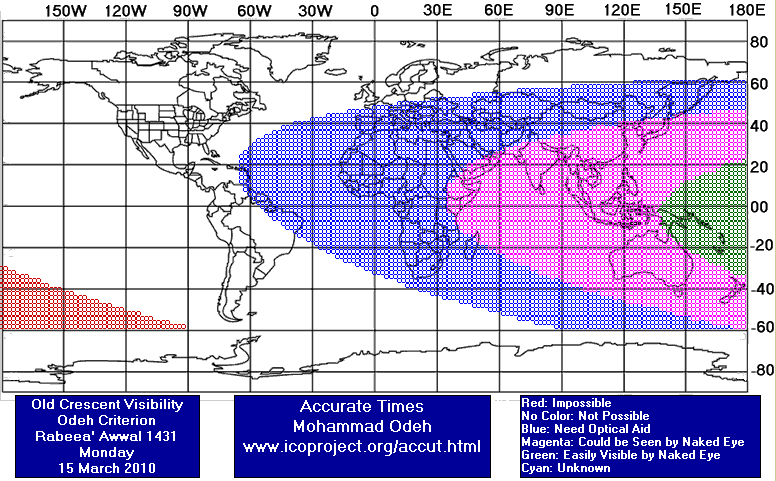
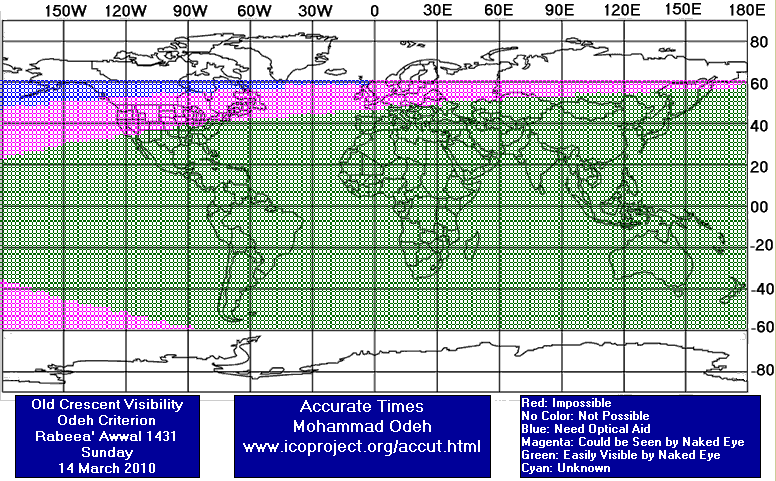
Rabee' Al-Awwal Waning (OLD) Crescent Observation Results
Sun 14 March 2010
United Kingdom
Eng. Qamar Uddin said: "On Sunday 14 March 2010 (27 Rabi-ul Awwal 1431) I have tried to observer the eastern horizon before sunrise for the waning (old) crescent, but was unable to see it as it was cloudy. However, I did see it yesterday (13 March 2010) morning without any problems from above the houses and poplar trees. See attached photos of the eastern horizon with and without the waning crescent. "And (as for) the moon, We have measured for it mansions (to traverse) till it returns like the (shape of) old dried curved date stalk" [Quran 36: 38]"
